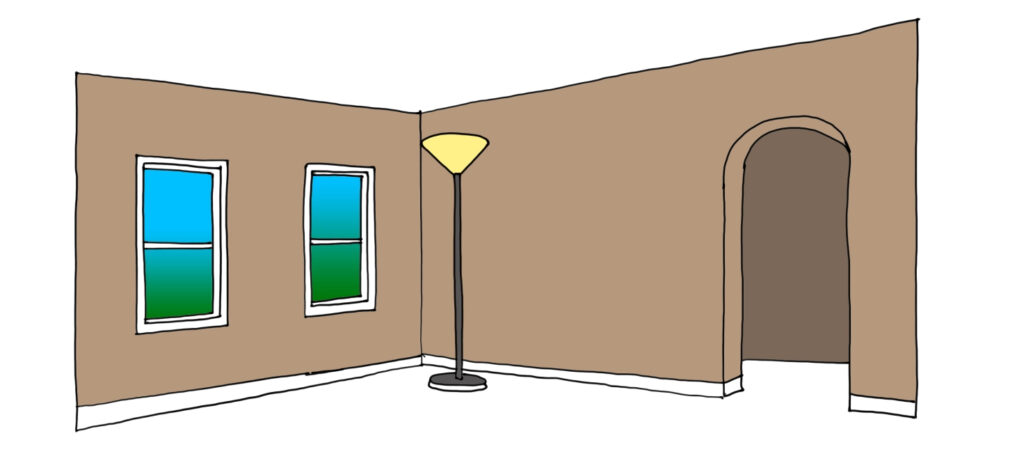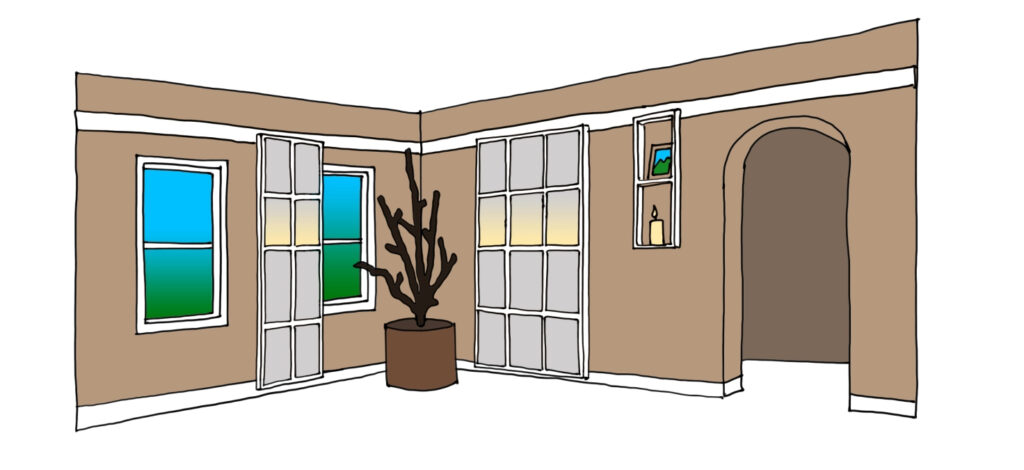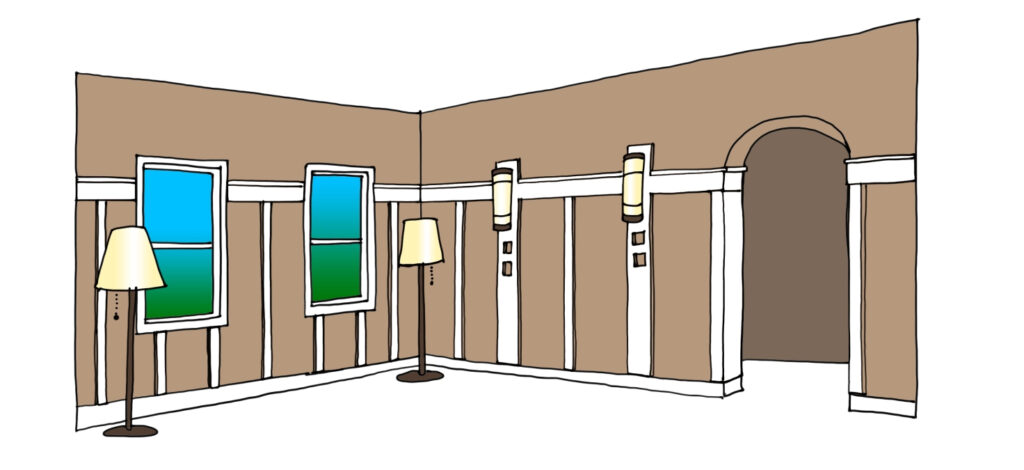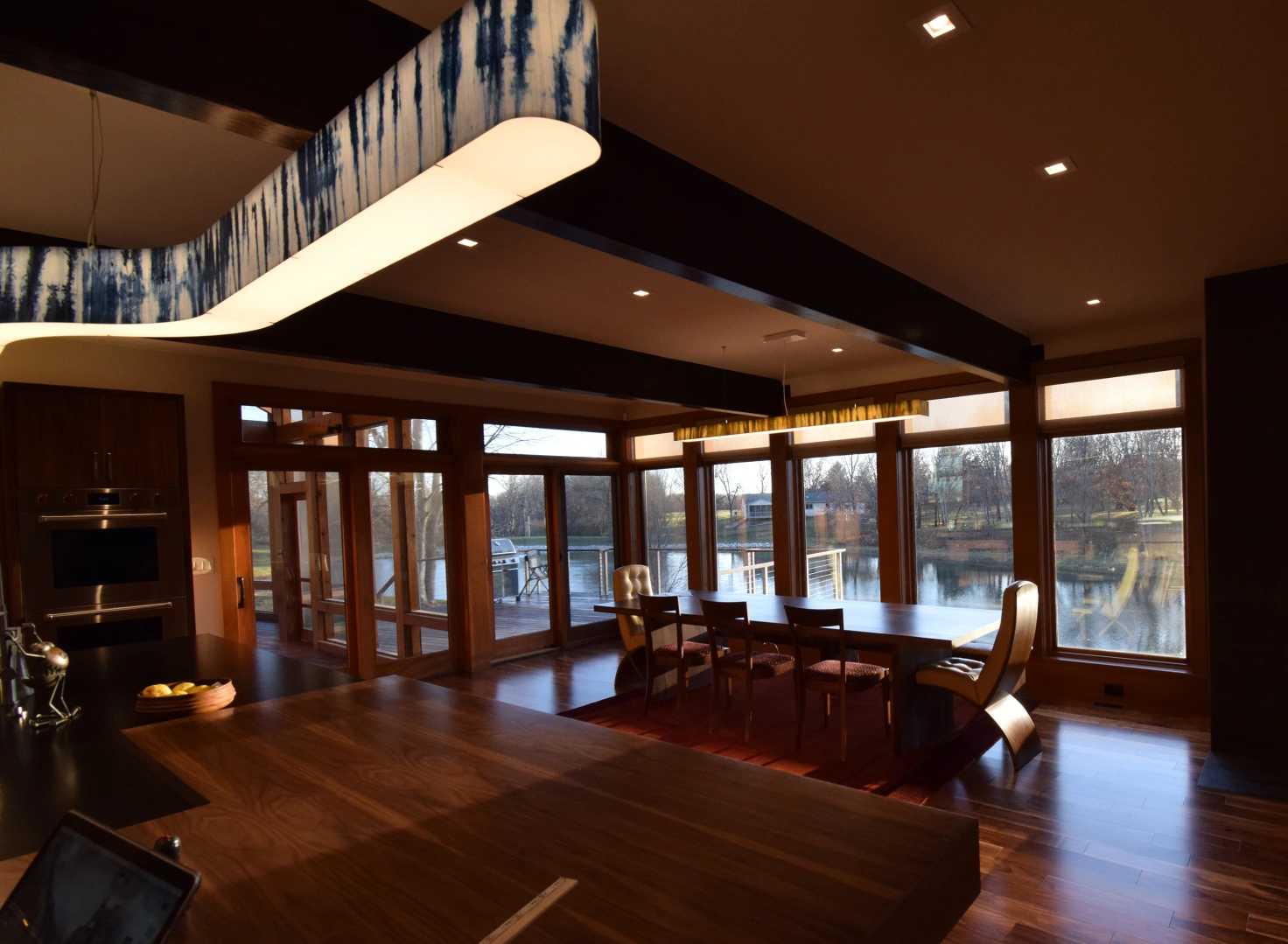Professional lighting designers use different terms like task, ambient, and accent light when describing what they do. And they may not always talk about storytelling, but it is embedded in their work none-the-less.
When I’m working with a client who is converting an old brick warehouse into a frozen yogurt shop, I might suggest neon lighting that evokes the classic feel of the warehouse, or color-changing light that will appeal to teenagers after Friday’s game. Which solution I recommend will depend on the client’s story, and the same is true at home. For my friend the frugal minimalist, I might suggest clean modern lighting with pure geometric forms, high energy efficiency, and low cost. For another friend with more traditional tastes, I might suggest a beautiful chandelier and discrete cove lighting for a new stepped tray ceiling.

A living room that tells a minimalist, frugal story…perhaps not the most comfortable.
When you re-imagine the lighting in your own home, you may instinctively know what light fixtures and lighting techniques work to tell your story. You may immediately know what pendant will look great in your dining area, or you may know that a pendant would be distracting over your dining room table. Either way, it is important to consider your story.

The same room reflecting a minimalist shoji-inspired story.
Light for storytelling is the proverbial icing on the cake, the beautiful glue that holds each layer of light for doing, knowing, feeling, and changing together. Yet all too often we think that the style of the light fixture is the only aspect of storytelling we need consider. We see a dining room table and assume that we are supposed to pick out a chandelier that looks right to us or tells our story, and we completely forget that we also need to consider light for doing, knowing, feeling, and changing in our space.

A third story for the room, this time of comfortable craftsman cottage. What is your story?
We might get lucky and get a few of those types of light out of our chandelier, but probably not all that we need. And we might just as easily get unlucky and end up with a chandelier that puts all the light on the drywall ceiling, leaving our food in the dark, our guests deeply shadowed, the perimeter of our room unlit, and that leaves all of us feeling rather blasé. I’ve known too many clients who pick out lovely looking pendants from a catalog (which often feature photographs of the pendants turned off or in full daylight) but end up with darkness on their countertops.
Good lighting cannot be determined just by knowing footcandles, color temperature, or lumens. Good lighting cannot be determined simply by choosing a fixture that looks pretty to us in a showroom. Good lighting is a sum of parts- of light for doing, light for knowing, light for feeling, and light that changes- glued together with light that tells our story. To find out why we’re hardwired for these layers, check out my posts on the nature of light.
Whew. Now we’re done with the introduction of each layer. Up next, I’ll start exploring how to apply these layers to your home.
